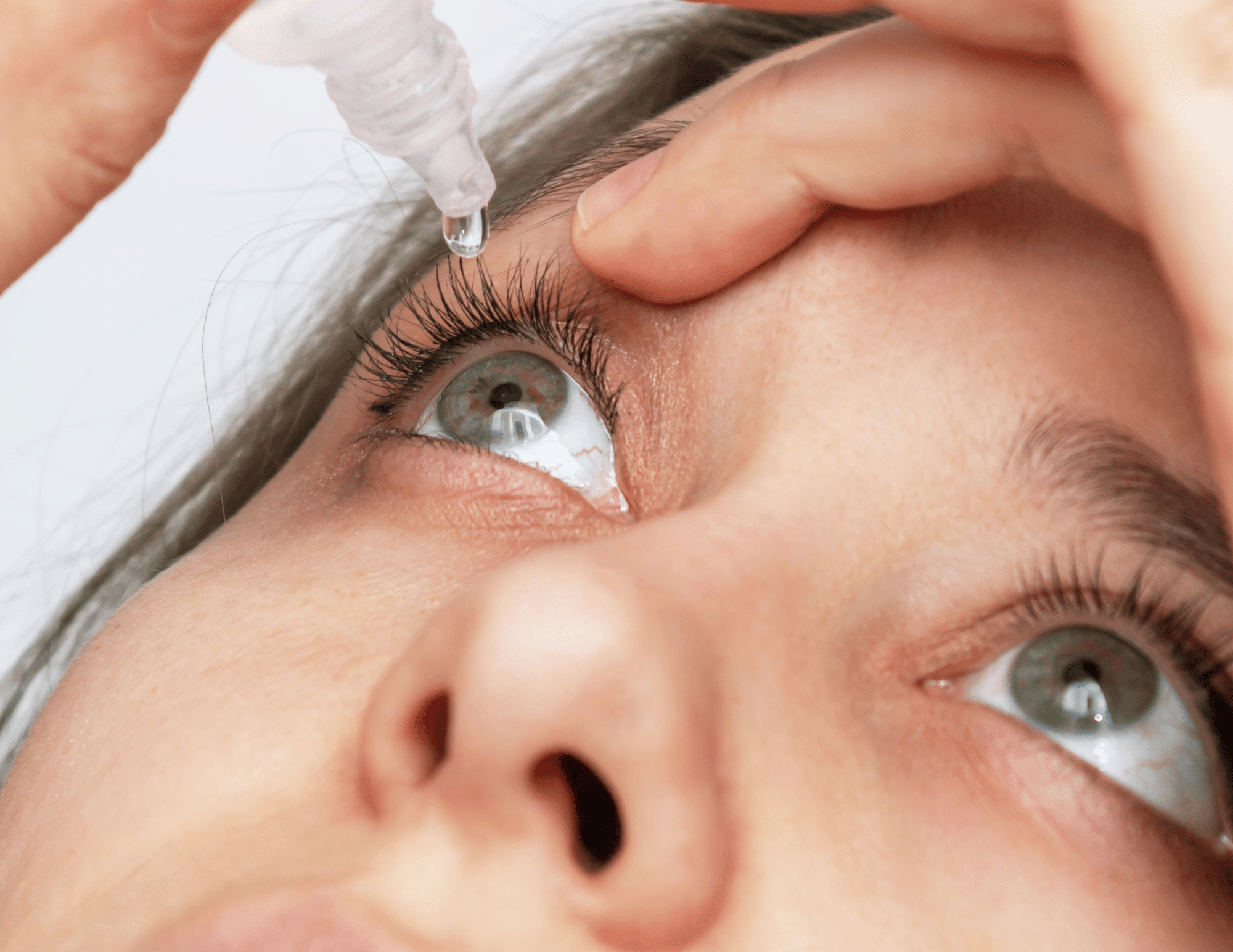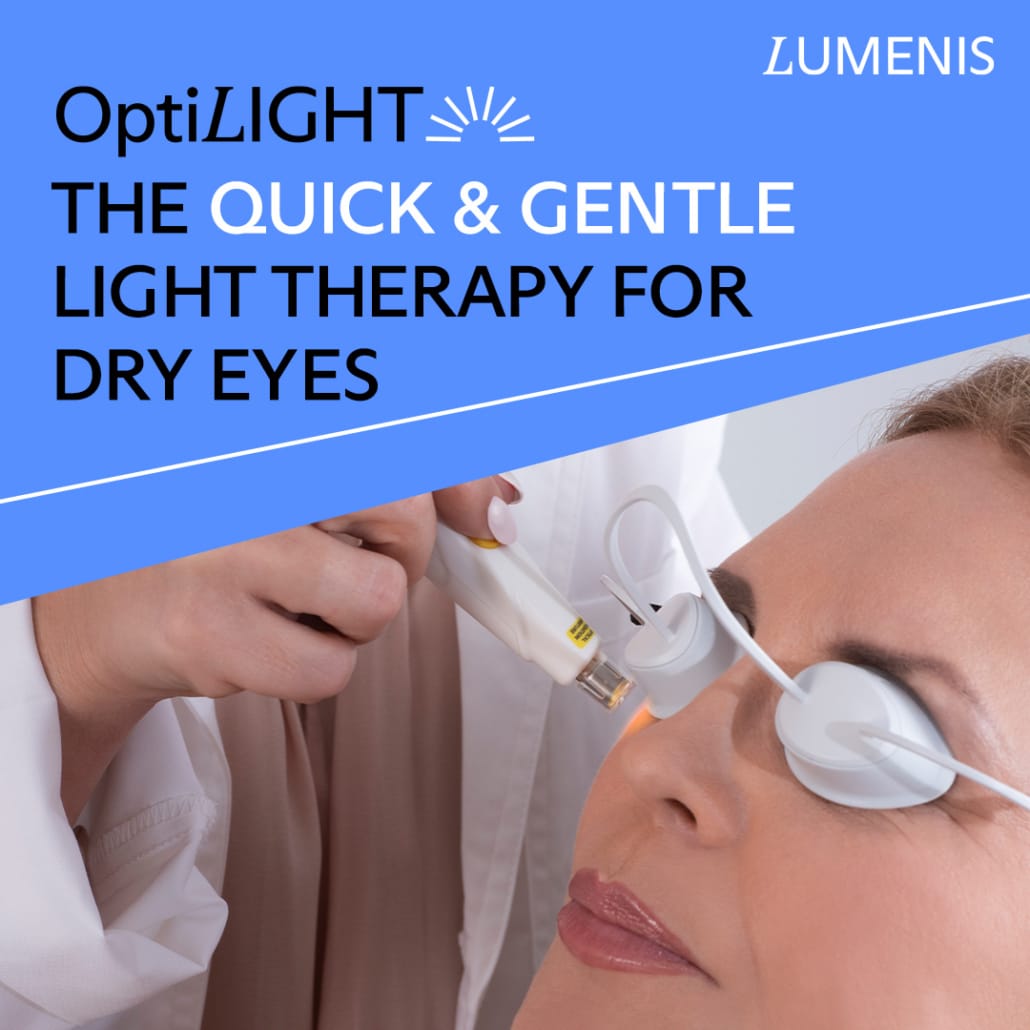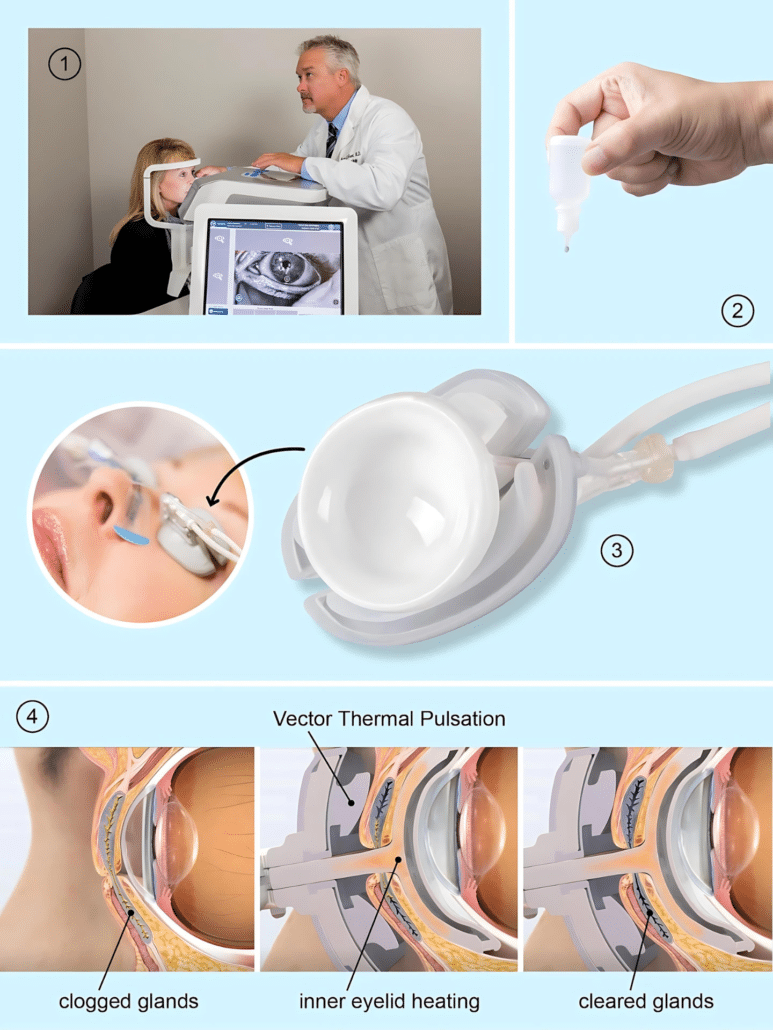What is dry eye disease?
Dry eye is a common and often chronic problem, particularly in older adults. When we blink, tears spread across the surface of the eye. Tears provide lubrication, reduce the risk of infection, wash away foreign matter, and keep the surface of the eye smooth and clear. Excess tears flow into small drainage ducts in the inner corners of the eyelids, which drain into the back of the nose. Dry eyes can occur when tear production and drainage is not in balance.
What causes dry eye?
Dry eyes can occur when tear production and drainage are not in balance. People with dry eyes either do not produce enough tears or their tears are of a poor quality:
Inadequate amount of tears. Tears are produced by glands in and around the eyelids, and production tends to diminish with age, with various medical conditions, or as a side effect of certain medications. Environmental factors, such as wind or dry climates, can also decrease tear volume. When tear production decreases, or tears evaporate from the eye too quickly, dry eye symptoms can develop.
Poor quality of tears. Tears are made up of three layers: oil, water, and mucus. Each part protects and nourishes the eye’s surface. The oil layer helps prevent evaporation of the water layer, while the mucin layer spreads the tears evenly over the eye. If there is a deficiency with any of these three layers that disrupts their functions, dry eye symptoms can develop.
Risk factors
Dry eyes can develop for many reasons, including old age, side effects of medications, environmental conditions, and certain medical conditions such as rheumatoid arthritis, diabetes, and thyroid problems. Women are also more likely to develop dry eyes due to hormonal changes caused by pregnancy, the use of oral contraceptives, and menopause. Long-term use of contact lenses can also be a factor in the development of dry eyes. Advanced dry eyes may damage the cornea and impair vision.
Do I have dry eyes?
Symptoms of dry eyes include:
- irritated, scratchy or burning eyes
- a feeling of something in your eyes
- excess watering
- blurred vision
- redness
- light sensitivity
- stringy mucus near the eye
If you are concerned about dry eyes, schedule a dry eye evaluation with Kirman Eye, and find out what treatment options are available to you. Treatment may be as simple as adding tears with over-the-counter artificial tear solutions, or you may want to consider different treatments that address the meibomian glands, such as OptiLight IPL or LipiFlow. Your doctor will discuss your options with you to find the best plan of treatment to suit your needs.
OptiLight IPL is the first and only light therapy that is FDA-approved for dry eyes. It is a quick, safe, and effective treatment that helps to restore the meibomian glands with Intense Pulse Light (IPL). A course of treatments typically includes 4 sessions, spaced 2-4 weeks apart. Each session usually takes only 10-15 minutes. You will need to avoid any sun exposure or artificial tanning leading up to your treatment, and will need to remove any makeup immediately beforehand. During treatment, your doctor will apply a coupling gel to the treatment area and cover your eyes with shields. You may experience a warm sensation as light is applied to the skin. The treatment is gentle with minimum discomfort. You may experience an expression of the meibomian glands after treatment.You may also experience skin rejuvenation and a noticeable improvement in your eyelids.
The LipiFlow Thermal Pulsation System uses pulses of heat to clear obstruction in the Meibomian glands. This is done to treat Meibomian Gland Disorder (MGD) which occurs when the Meibomian glands become stopped up and are unable to produce enough tears to maintain the lipid layer, or the outermost layer of tear film on the eye. Anyone can get MGD, but some of us are more prone to it than others. Contact lens wearers are at higher risk, for instance, as are heavy users of personal electronic devices.
To see whether your dry eye is due to an obstruction of the Meibomian glands, your doctor will first use LipiScan imaging to examine your glands and make a diagnosis. Once it is determined that your eyes could benefit from LipiFlow, treatment can begin. First, your doctor will use numbing drops to ease any potential discomfort from the procedure. Next, the system’s activators—dome-shaped, single-use sterile devices—are placed on your eyes. Their vaulted shape keeps your corneas protected during the treatment, which focuses on the inner eyelids, where the Meibomian glands are located. Using what’s called Vector Thermal Pulsation technology, the activators send heat into the glands inside your lids. This combination of heat plus pressure massages any blockages and liquefies and clears the obstructions that are causing your symptoms. The full procedure typically takes about 12 minutes.








